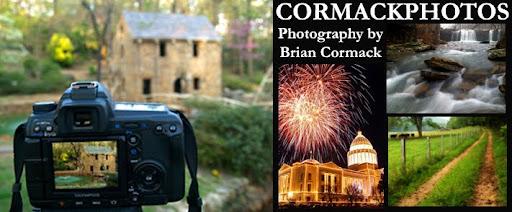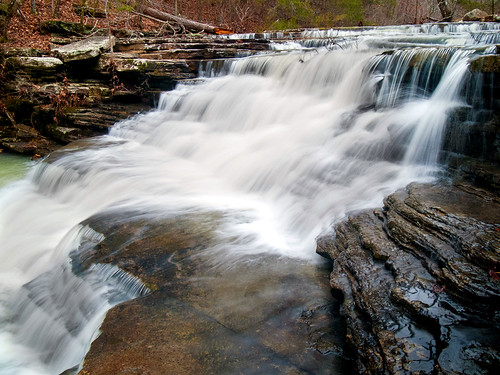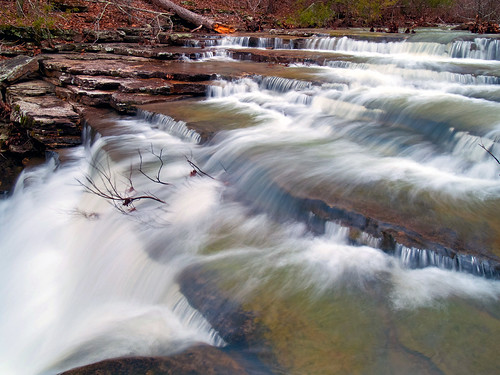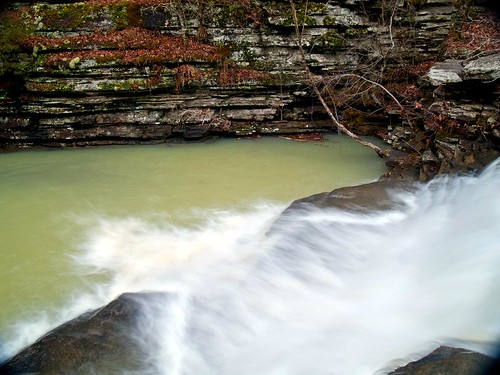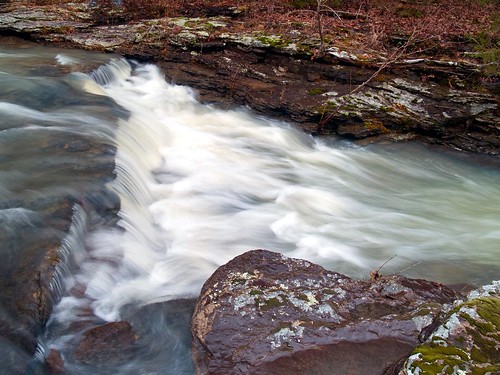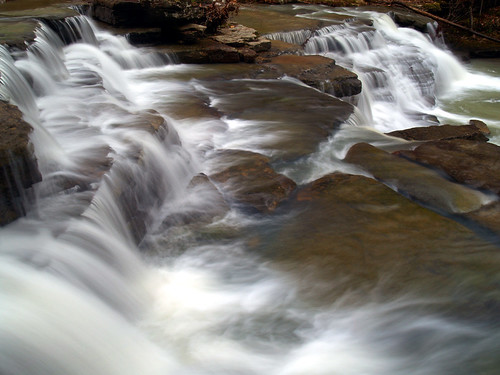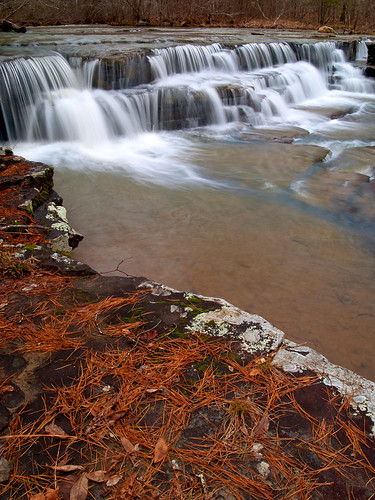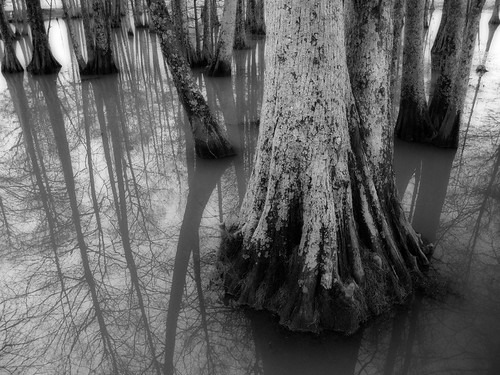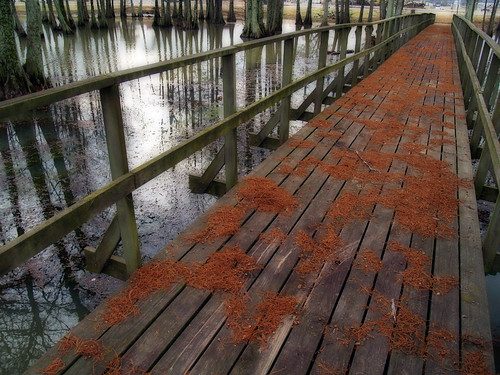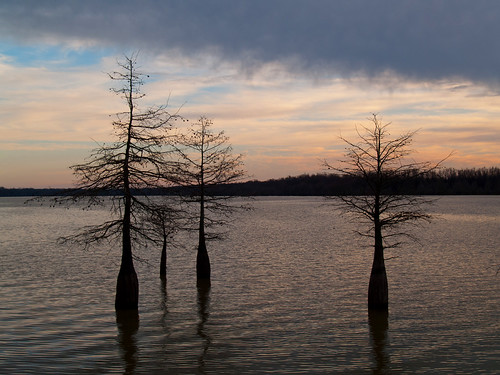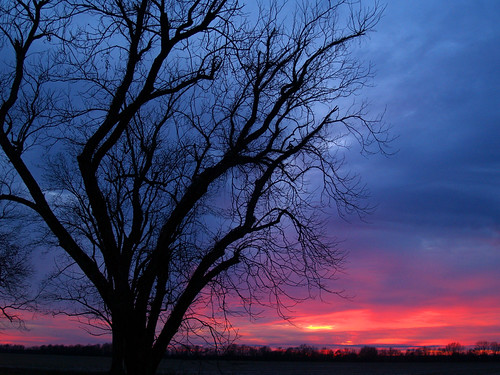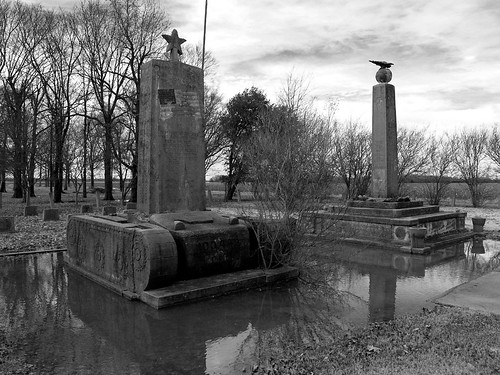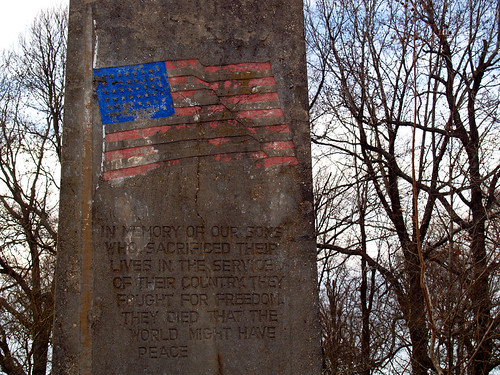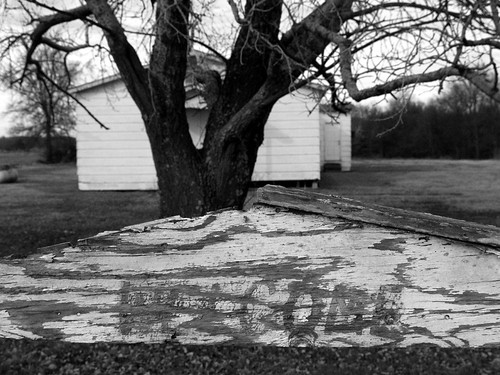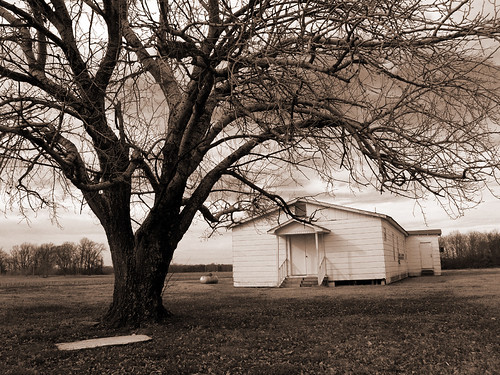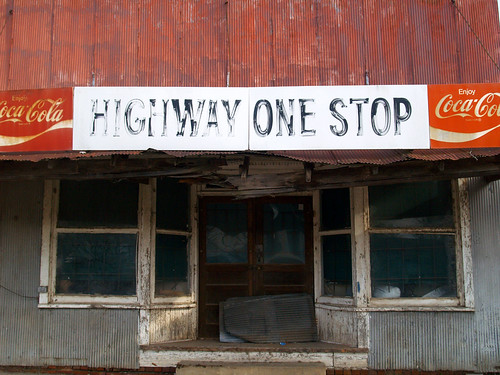When I finally woke up a few hours later, I saw some ice sticking in a few places, but the roads still looked relatively clear. I tried to decide on heading off somewhere to take pictures, and debated whether I should drive up to Collins Creek for some snowy waterfalls. But I heard that the roads had gotten a bit icy around Conway, and it would be wiser to not make any long trips on slick roads.
So instead I headed out to some places closer to home. After spending twenty minutes clearing off the ice from the car, I headed out to Burns Park in North Little Rock. Ice was beginning to accumulate on the roads, but it wasn't bad yet in the park. The first stop I made was at the old cabin which was built before the Civil War.

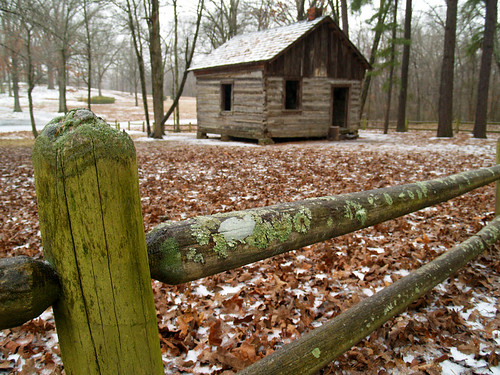
It was sleeting, and the tiny ice pellets were sticking to the road. I didn't think I'd be able to get much more time in before the roads got bad. But I figured I'd have time enough to make a quick visit to the covered bridge in the park.

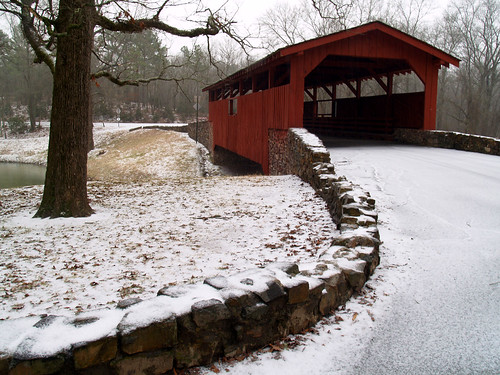
I tried to leave the park, but drove up to a locked gate. I drove a bit further down, past the funland and rocket slide and hit another locked gate. It dawned on me that the gates into the park might have been locked on me while I was at the bridge. I saw a number to call on a pavilion, and just got the voice mail for the NLR Parks and Recreation Department. There was only one other way out, and I hoped the gate there wasn't closed as well. Luckily, it was open and I made a quick escape.
I decided I would try to visit the Old Mill in North Little Rock too, which was riskier since the area around the mill has a lot of hills. I drove up J.F.K. Boulevard and saw cars already sliding around, with the police blocking off some of the more hilly portions of the road. Luckily I was able to drive up to the Old Mill, only to find the gates there locked as well.
With my attempts at photography thwarted by the NLR Parks and Recreation Department, I instead drove over to a friend's house. As it got dark, the ice accumulated more on the streets. It was perfect sledding conditions, and we spent some time sledding down some hills in Sherwood.
The ice had turned over to snow that night, and we ended up getting about an inch and a half of ice/snow. We went sledding a few more times, but then I set out to try to get some pictures before all the ice melted away.
Since I was in Sherwood already, I drove out to the old Roundtop gas station. The road to the station passes by a wetlands area. The water was covered in a sheet of ice, and snow clung to a few of the trees.
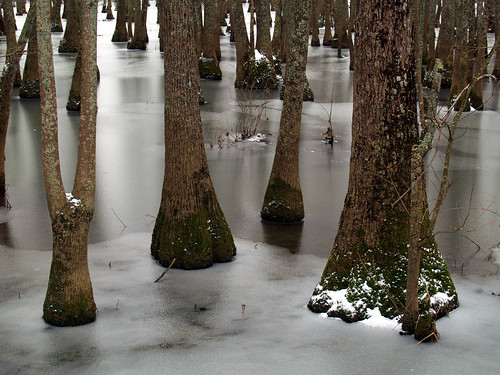

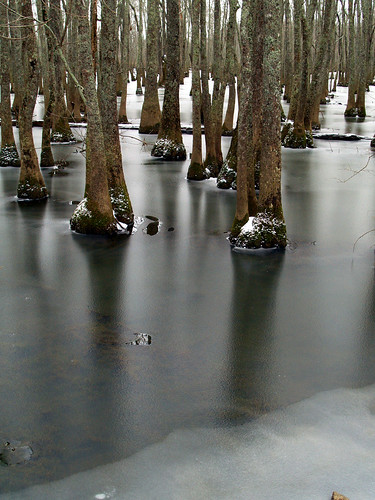
And a shot of the old Roundtop station. I hoped there would be more ice or snow there, but it had already been cleared out or melted.
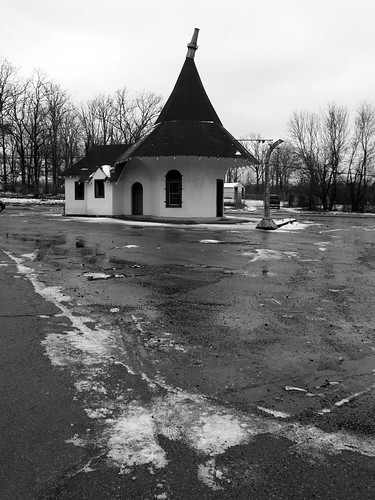
It had gotten above freezing, and all the ice was quickly melting away. That made the roads clear, so it wasn't bad when I drove into downtown Little Rock. I stopped at the Old State House, only to see that the gates there were chained shut as well.

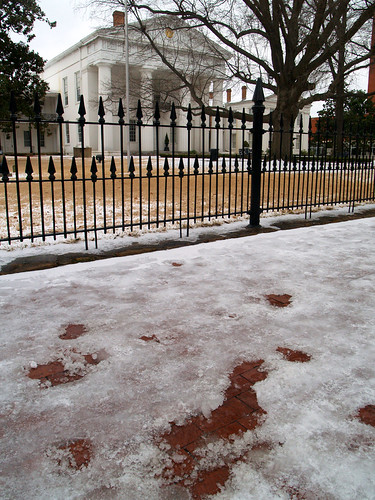
Next, I headed out to Pinnacle Mountain State Park, which is just west of Little Rock. It seemed like there was a bit more snow and ice there, maybe about two inches or so. Amazingly, the park was open...
This was taken along the Kingfisher Trail...
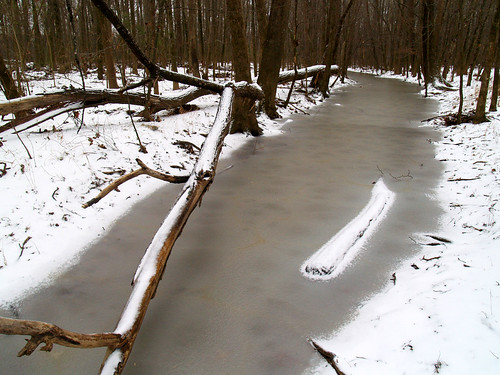
Judging by footprints in the snow, it didn't seem like many people had walked the trail that day. There were more animal prints along the trail than people prints. The Kingfisher Trail is a pleasant place to stroll, especially in the quiet snowy landscape. The trail runs alongside the Little Maumelle River.
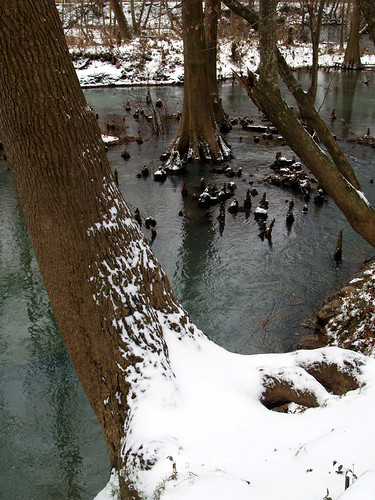

The Little Maumelle River flows just past the base of Pinnacle Mountain, where several old cypress trees sit along the shore and in the water.
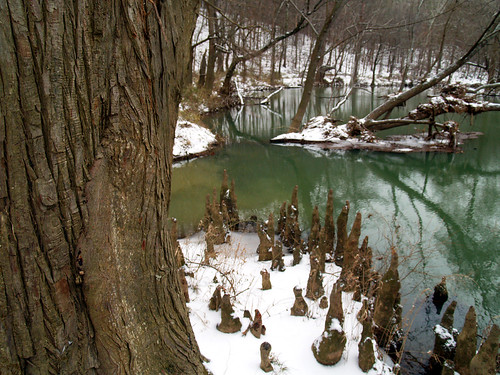
And a closer view of the cypress knees. Check out the debris stuck in the tree in the background. That probably got put there when this area flooded on Christmas Eve.

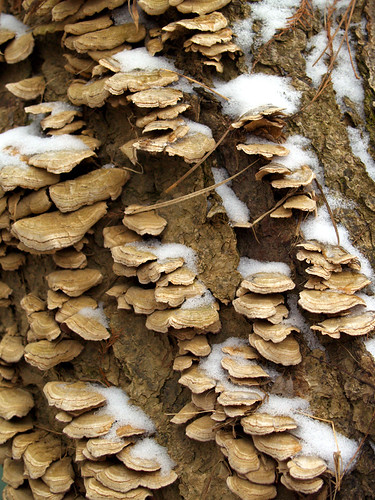
And a view of Pinnacle Mountain. When I was there some people parked and started on the trail to head up to the top.
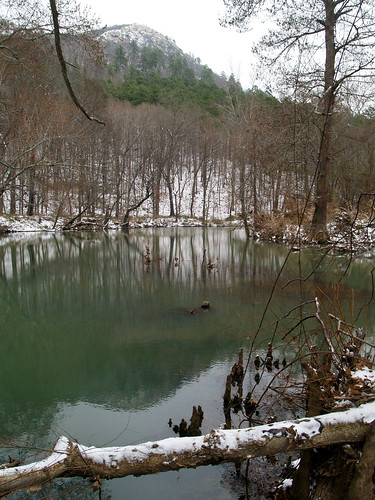
And one last shot of the snow reflected in the Little Maumelle River:

And another view of the mountain, from the park road heading over to the visitor center. It wasn't all that icy, and I only slid once that day (and that was turning into my apartment complex).
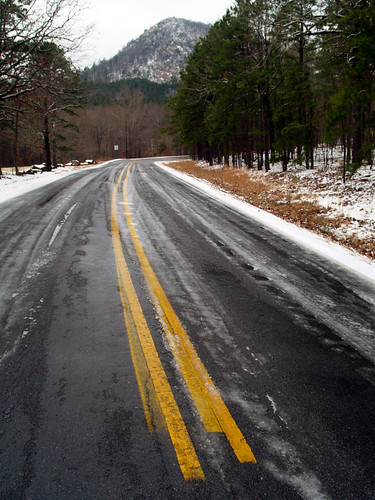
I drove up to the visitor center and went out to explore the blue lake right next to the parking lot...
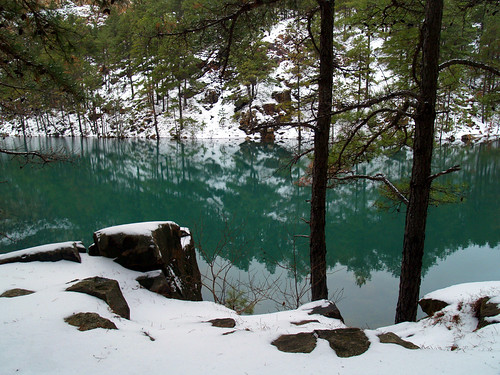
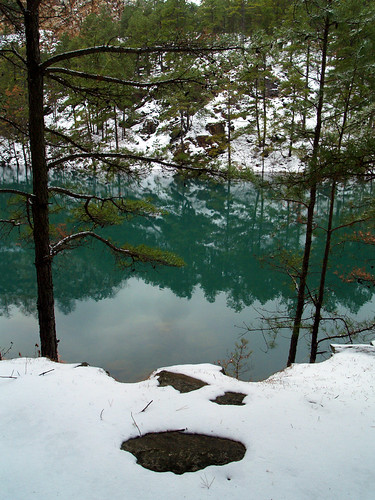
I went up the overlook, which provides a sweeping view of the Arkansas River and some snow-covered fields.
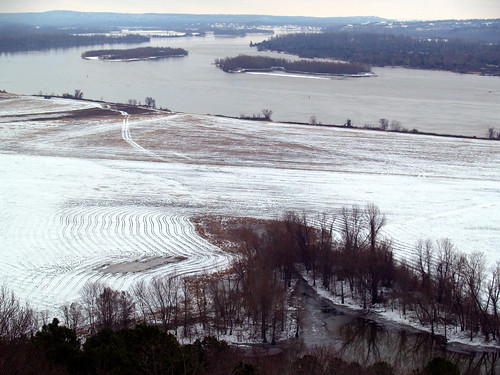
Also from the parking lot, I got this shot of the mostly empty and snowy parking lot.

That's my (badly parked) car in the shot. This looks like it was converted to black and white, but it actually wasn't. It was just a monochrome looking view, I guess. There is only a tiny bit of color - the red of the Pontiac logo on the front of the car....
